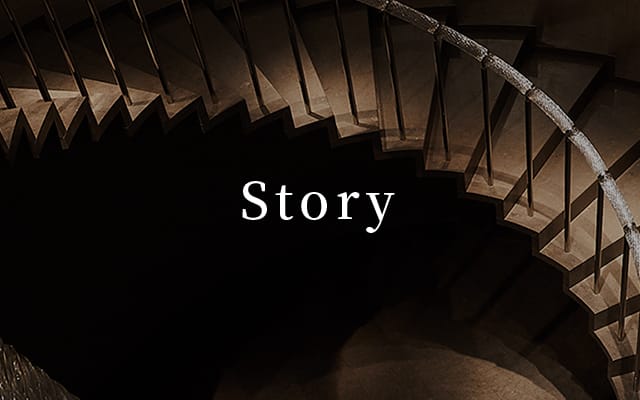Our Story
Kikuchi Kanjitsu Memorial Tomo Museum (commonly referred to as Musée Tomo or Tomo Museum) was established by Kikuchi Tomo (1923-2016) in 2003. The founding collection of ceramics were selected by Tomo herself. Since opening, Tomo Museum has been dedicated to showcasing exhibitions that shed light on contemporary ceramists including those who have passed away and left an important mark in the Japanese contemporary ceramic world. Today, Tomo Museum continues to specialize in presenting works by Japanese contemporary ceramists, as well as artists who work in different mediums such as glass, lacquer, metal, and textile.
Tomo’s Encounter with Ceramics
Tomo’s encounter with ceramics was due to her father, Kikuchi Kanjitsu (1885-1967). Kanjitsu inaugurated a mining business, where he engaged in the energy industry managing companies in Takahagi city in Ibaraki prefecture. There, he built a noborigama (climbing kiln) for the ceramists from Seto city in Aichi prefecture, who had come to work in Takahagi city under the National Requisition Ordinance.
In the early 1940s, during the World War II, Tomo happened to visit her father in Takahagi city after evacuating from Tokyo. Just over the age of 20, Tomo witnessed how clay were thrown into the flames and reemerged as a new form, as if the clay was a life force. This sight left a striking impression on Tomo that affected her own view of life and death especially at a time when she lost people close to her in the war.
-
After the war ended in around the late 1950s, Tomo began collecting ceramics. Originally, Tomo started mingling with masters and specialists of tea ceremony, which deepened her interest in various antiques including ceramics. However, participating in tea ceremonies shifted her desire from just “gazing” at the ceramics to wanting to both physically and emotionally “obtain” these ceramics. She began collecting ceramics, and later on, works by contemporary ceramists who were active at that time.
As for the charm of contemporary ceramics, Tomo commented, “What attracted me was probably the joy of chasing unknown excitements of not knowing when and what sort of beauty would appear in front of me. I feel that the enchantment of contemporary ceramics lies in being able to grasp the unexpected beauty.”

FUJIMOTO Yoshimichi, Service Plate with Overglaze Enamels, with Kingfishers 1976
The Opening of a Contemporary Ceramic Gallery, Kandori
In 1974, Tomo opened a contemporary ceramic gallery called Kandori on the lobby floor of Hotel New Otani, located in Tokyo. The gallery name derives from a story that Tomo’s father, Kanjitsu, told Tomo when she was a child. It is said to have been about a story of a man named Kandori Kanbey, who became the largest ceramic dealer in Japan. The gallery signboard was written in calligraphy by the Japanese-style painter, Okumura Togyu, and the gallery space was designed by the architect, Kikutake Kiyonori.
-
In the first commemorative solo exhibition, Tomo chose to feature Fujimoto Yoshimichi, a professor at Tokyo University of the Arts. It was Hayashiya Seizo, who brought the two together. Hayashiya was the head of the Ceramics Section in the Crafts Department of Tokyo National Museum, who later became the first director of the Kikuchi Kanjitsu Memorial Tomo Museum.
Through Fujimoto, many young ceramists from Tokyo University of the Arts were introduced at Kandori gallery. From there, this gallery gradually started to introduce other ceramists from all over Japan. In 1979, Kandori gallery set up a stand in Bloomingdale’s, a department store in New York city. This success led to new opportunities for Tomo.

YAGI Kazuo, Black Flower 1964
Japanese Ceramics Today, an Exhibition at the Smithsonian Institution
-
Tomo was invited to hold an exhibition of contemporary Japanese ceramics in the Thomas M. Evan Gallery at the Smithsonian National Museum of Natural History in Washington, D.C. This exhibition was titled, “Japanese Ceramics Today, Masterworks from the Kikuchi Collection” and took place for roughly two months from February 11th to April 3rd, 1983. Comprised of approximately 300 works by 100 artists, all of the works for the exhibitions were from Tomo’s collections. This exhibition demonstrated Tomo’s desire to introduce the (then) present state of Japanese ceramics to the West, as more than half of the exhibiting artists were in their thirties or forties.

This exhibition also aimed at introducing the contemporary ceramics not only as a work of art but as a framework that represents the Japanese lifestyle. For example, to introduce the Japanese tea ceremony, a tearoom was set up. This tearoom had tatami mat (a traditional Japanese flooring made by weaving igusa straw together) and displayed tea ceremony utensils. In a separate space, kaiseki (tea-ceremony cuisine) trays were laid out on the tatami mat to show how the different tableware reflect the four seasons of Japan.
This exhibition became popular and traveled to the Victoria and Albert Museum in London from May 18th to July 17th that same year in 1983. The fact that an exhibition introducing Japanese culture was accepted in the midst of the Japan-U.S. trade conflicts allowed Tomo to realize the significance of cultural exchange.
During Tomo’s time at the Smithsonian Institution, she met their exhibition designer, Richard Molinaroli, and learned that the design of the exhibition greatly influences how each exhibit is experienced.
Three Exhibitions Held at the Kikuchi Guest House
Back in Japan, Tomo decided to hold solo exhibitions, by focusing on curating a space suitable for the artworks on display. To make this into a reality, she used the Kikuchi Guest House to hold three separate exhibitions. The Kikuchi Guest House lies on the premises where the Kikuchi Kanjitsu Memorial Tomo Museum currently stands. This area used to be the base of Kanjitsu’s activities and after his passing, it was used as a guest house. The reception hall in the guest house was refurbished as the exhibition space.
For the three exhibitions that were organized, Tomo commissioned Richard Molinaroli to design the exhibition space. He was invited to Japan and had opportunities to observe the ceramists work. All of the three exhibition spaces were designed to fit the context of each exhibition and were drastically different.
The first exhibition in 1985, titled, “Ryuryotensho” was on works by Suzuki Osamu (b.1934, a holder of Important Intangible Cultural Property, in the field of Shino). The exhibition presented his works from 1979 to 1985.
The second exhibition in 1990, titled, “Tenmon” was on Raku Kichizaemon XV (b.1949) who is a member of the Raku family (inheritor of an over 400-year-long family tradition of tea ware craft). Similar to the Suzuki Osamu exhibition, the exhibits were mainly tea bowls, highlighting Kichizaemon XV’s creation over a period of six years.
The third exhibition in 1992, titled, “Tokayoen” was on works by Fujimoto Yoshimichi (1919-1992, a holder of Important Intangible Cultural Property in the field of Iroejiki -a porcelain with overglaze enamels). This exhibition took place in March and Fujimoto passed away in May.

The Opening and the Present of Kikuchi Kanjitsu Memorial Tomo Museum
Having held the exhibition at the Kikuchi Guest House, Tomo began to consider the idea of founding a museum. At last, she established the Kikuchi Foundation and opened the Kikuchi Kanjitsu Memorial Tomo Museum in 2003. The galleries are designed by Richard Molinaroli and Tomo’s sense of beauty is reflected in every corner of the museum.
At Tomo Museum, we present exhibitions from group to solo artists, modern, contemporary, to postwar ceramics of Japan. In addition to these exhibitions, Tomo Museum hosts the “Kikuchi Biennale” once every 2 years, aiming to provide opportunities for artists to present their works to the public, at our museum.







